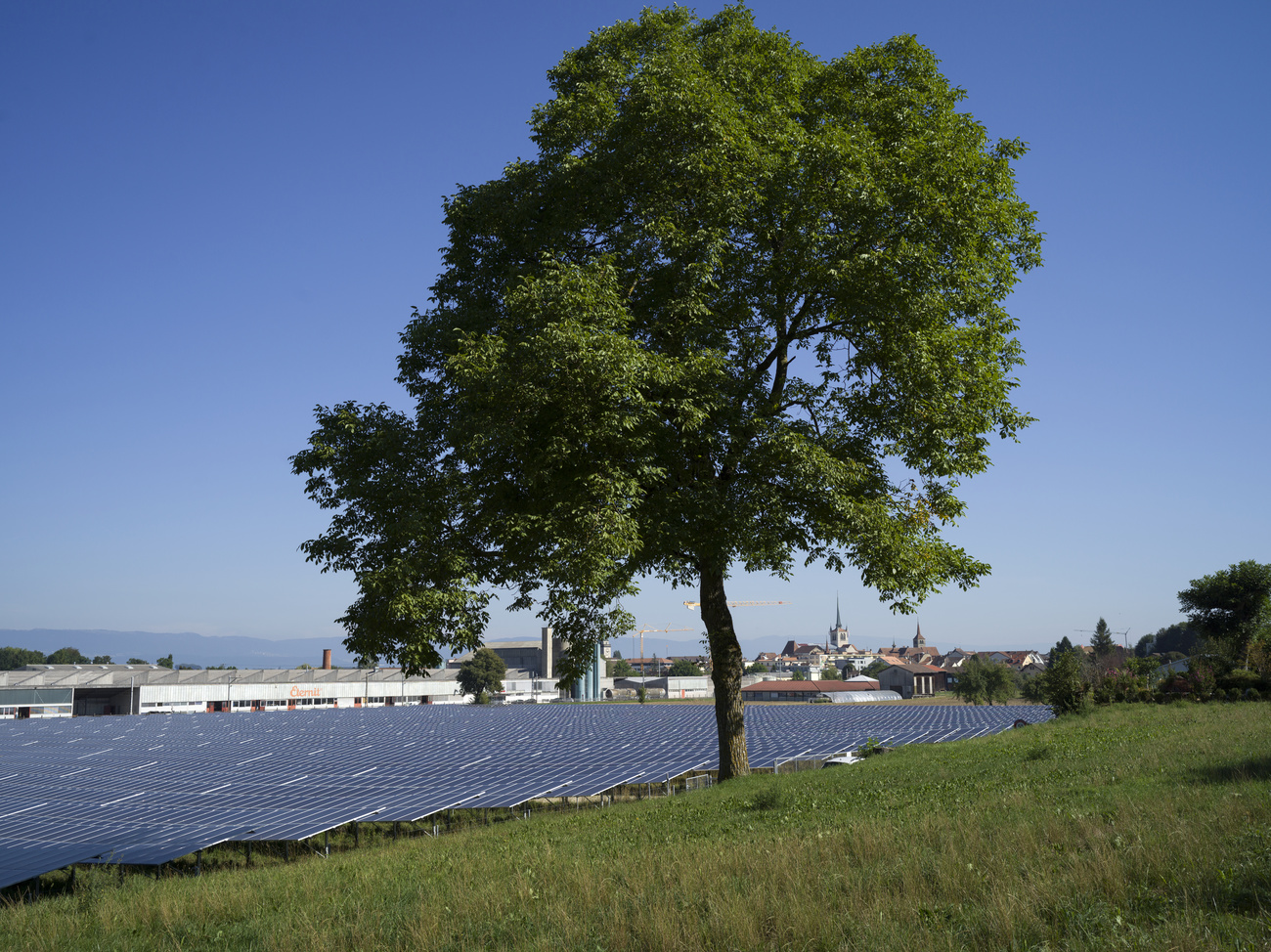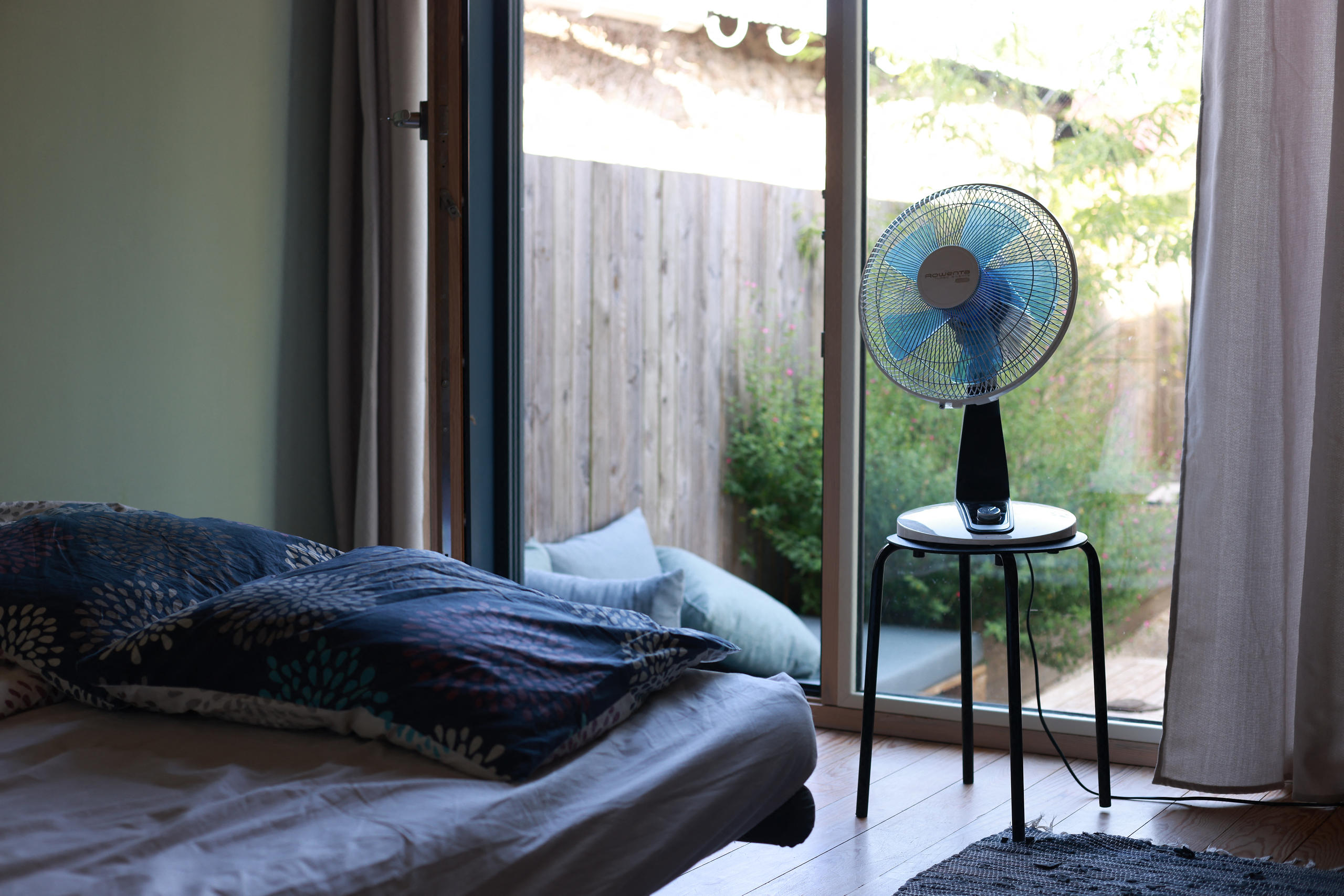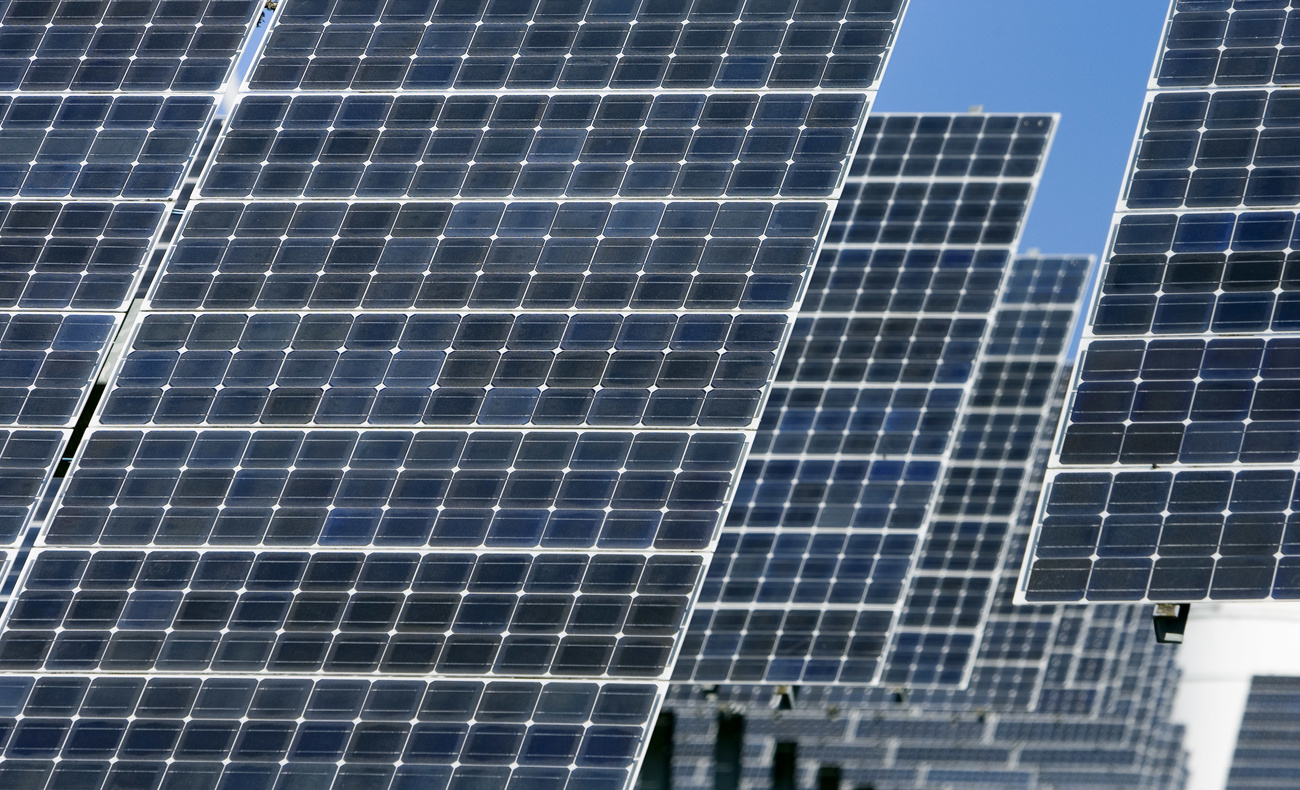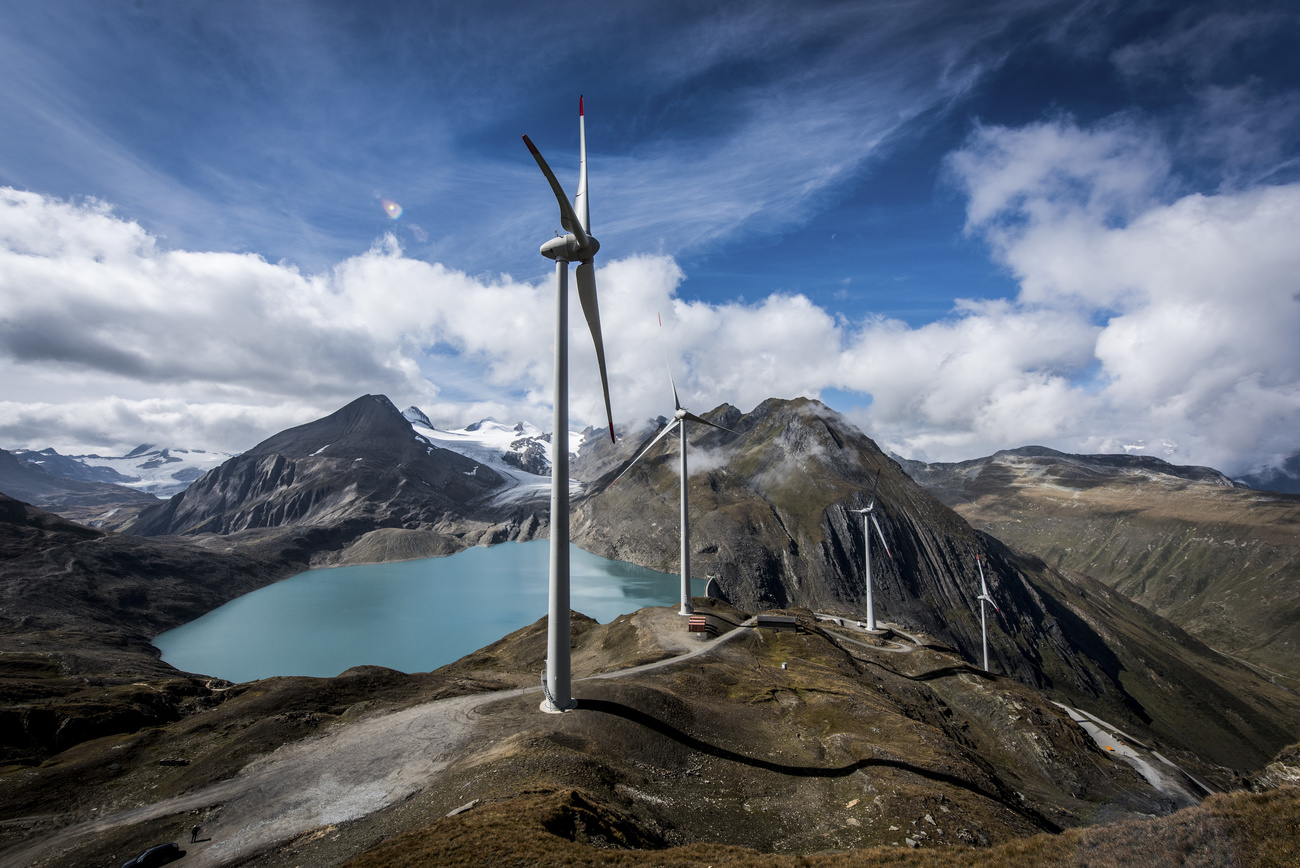Making better use of solar energy necessary to meet Swiss climate targets

Solar energy in Switzerland needs to be harnessed more effectively if Switzerland is to meet its energy targets, according to the Swiss Federal Audit Office (FAO). It recommends updating the strategy in this area. For example, financial incentives need to be better coordinated.
Together with hydroelectric power, photovoltaics (PV) should replace nuclear power as the mainstay of Swiss electricity production by 2050. To achieve its energy and climate policy objectives, the federal government has taken steps to encourage the production of solar energy. The targets have been raised several times and the measures regularly adapted.
While the strong growth in PV installations over the past three years is positive and in line with objectives, there are risks to the implementation of the next stages, according to the FAO in an audit published on Wednesday. The medium- and long-term targets set by the Federal Council for 2035 and 2050 can be achieved if the current rate of construction continues.
Insufficient coordination
Against this backdrop, the FAO points to a lack of overview when it comes to the profitability of solar installations. While the development of electricity prices on the market and the distribution network operators play a role, profitability also depends on federal subsidies.
+Another Swiss solar project forced to trim ambitions
In some cases, projects are not built because they are too expensive despite the subsidies, while in other cases similar projects can be operated profitably without subsidies, making the subsidies ineffective, explains the FAO. The FAO therefore recommends better coordination in this area.
In its statement, the Swiss Federal Office of Energy (FOE) pointed out that this lack of coordination is due to political factors. Incentives for photovoltaics are currently under discussion in Parliament. Depending on the decisions taken, the FOE hopes to draw up the recommended concept by the end of 2024.
Making better use of mountain areas
According to the FAO, profitability could also be improved by making greater use of available land outside building zones. The FAO deplores the fact that there is too much focus on the use of solar energy in buildings. The potential of PV is not sufficiently exploited in mountain regions, which receive more sunshine in winter.
+Switzerland divided on how to switch to green energy
In view of Parliament’s increasingly ambitious development objectives, the FAO recommends updating the strategy in this area and defining criteria for the planning and construction of large-scale PV installations on these surfaces. The decisive criteria could be environmental impact, grid connection, profitability and contribution to winter supply.
Favouring large structures
Finally, the FAO points to a problem of profitability in relation to the power of the installations. It is more profitable to promote large-scale facilities than smaller ones.
Since its introduction in 2014 and until the end of 2022, the single feed-in remuneration has benefited some 130,000 solar power plants with an annual output of 2.6 terawatt hours, for a total amount of CHF1.5 billion ($1.7 billion). Just over 127,000 of these are considered small-scale, as they have an output of less than 100 kilowatts.
+Government wants to speed up construction of renewable energy plants
The other 3,000 or so, counted as large-scale installations, produce around a third of annual output but have received just under CHF400 million in subsidies. According to the FAO, even if the photovoltaic potential of large roofs is already better exploited than that of small ones, there is still considerable potential for savings by making even greater use of large installations.
The FAO also proposes reviewing the profitability of the single feed-in tariff and making it simpler, for example by doing away with the distinction between integrated and add-on installations. The FOE rejects the recommendation on aesthetic grounds. It argues that this leads to greater acceptance of solar panels.
This news story has been written and carefully fact-checked by an external editorial team. At SWI swissinfo.ch we select the most relevant news for an international audience and use automatic translation tools such as DeepL to translate them into English. Providing you with automatically translated news gives us the time to write more in-depth articles. You can find them here.
If you want to know more about how we work, have a look here, and if you have feedback on this news story please write to english@swissinfo.ch.

In compliance with the JTI standards
More: SWI swissinfo.ch certified by the Journalism Trust Initiative




You can find an overview of ongoing debates with our journalists here. Please join us!
If you want to start a conversation about a topic raised in this article or want to report factual errors, email us at english@swissinfo.ch.